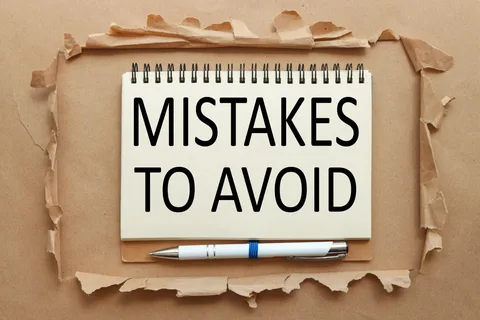Ensuring Safety and Durability in Your Staircase
I. Introduction
The Importance of Proper Stair Tread Installation
Proper stair tread installation is crucial for ensuring the safety and durability of your staircase. A well-installed staircase not only enhances the aesthetic appeal of your home but also provides a secure and stable environment for users. However, common mistakes during stair tread installation can lead to a range of problems, from minor annoyances to major safety hazards. In this article, we will discuss the common mistakes to avoid during stair tread installation, with a focus on proper adhesive use and techniques.
II. Pre-Installation Mistakes to Avoid
Preparation is Key to a Successful Installation
Before starting the installation process, it is essential to prepare the stair surface and materials properly. Incorrect measurements can lead to treads that are too large or don’t fit properly, causing gaps or misalignment [1][4]. Failing to properly prepare the stair surface by cleaning, leveling, and repairing any damage before installation can also lead to a range of problems [1][6]. Additionally, not maintaining proper room temperature (65°F to 85°F) and humidity (35% to 65%) during installation can affect adhesive performance [6].
Another critical mistake to avoid is failing to acclimate materials for at least 48 hours before installation [6]. This allows the materials to adjust to the environment, reducing the risk of warping or cupping. Neglecting to acclimate materials can lead to a range of problems, including uneven installation and premature wear.
III. Adhesive-Related Mistakes to Avoid
Choosing the Right Adhesive and Application Techniques
Choosing the right adhesive is critical for a successful stair tread installation. Using water-based or low VOC adhesives can cause warping and cupping of solid wood treads due to excess moisture [14]. Instead, it is recommended to use a high-quality adhesive specifically designed for common stair tread installation.
Applying too little adhesive or relying solely on screws without proper securing techniques can also lead to a range of problems [13]. It is essential to follow the manufacturer’s instructions for adhesive application and to use the recommended amount. Additionally, using epoxy nose caulk can help prevent air gaps under the nose of the tread and eventual cracking [12].
IV. Installation Mistakes to Avoid
Ensuring a Secure and Even Installation
During the installation process, it is essential to ensure a secure and even installation. Installing cove risers underneath the nose of the tread instead of butting them to the bottom of the nose can lead to a range of problems [12]. Choosing a stair tread with a nose that doesn’t conform to the front of the stair can also cause issues [12].
Not pushing the nose of the tread tight against the step or failing to adhere it properly can lead to air gaps and uneven installation [12]. Neglecting to fill any air gaps underneath the nose of the tread can also cause problems [12]. Failing to scribe-fit treads to walls or skirt boards while maintaining a consistent overhang can lead to uneven installation and premature wear [7].
V. Post-Installation Mistakes to Avoid
Ensuring a Long-Lasting and Safe Staircase
After the installation process is complete, it is essential to ensure a long-lasting and safe staircase. Rushing the curing process and allowing foot traffic too soon after installation can lead to a range of problems [1]. Not sealing gaps or cracks in the stairs before installing treads can lead to water seepage and rot [17].
Neglecting to check for squeaks or movement in the rough staircase structure before installation can also cause issues [6]. Using nails instead of screws can lead to loose treads and squeaks over time [11]. Not considering the traffic level and choosing inappropriate tread material for the setting can also lead to premature wear and safety hazards [1].
VI. Conclusion
The Importance of Attention to Detail in Stair Tread Installation
In conclusion, proper stair tread installation is crucial for ensuring the safety and durability of your staircase. By avoiding common mistakes during the pre-installation, installation, and post-installation phases, you can ensure a successful and long-lasting installation. Remember to choose the right adhesive, follow proper application techniques, and ensure a secure and even installation. By paying attention to detail and following best practices, you can create a safe and durable staircase that will last for years to come.
Common Stair Tread Installation Mistakes to Avoid:
- Incorrect measurements
- Failing to prepare the stair surface
- Not maintaining proper room temperature and humidity
- Failing to acclimate materials
- Using water-based or low VOC adhesives
- Applying too little adhesive
- Not using epoxy nose caulk
- Installing cove risers incorrectly
- Choosing a stair tread with a nose that doesn’t conform to the front of the stair
- Not pushing the nose of the tread tight against the step
- Neglecting to fill air gaps underneath the nose of the tread
- Failing to scribe-fit treads to walls or skirt boards
- Rushing the curing process
- Not sealing gaps or cracks in the stairs
- Neglecting to check for squeaks or movement in the rough staircase structure
- Using nails instead of screws
- Not considering the traffic level and choosing inappropriate tread material
By avoiding these common mistakes, you can ensure a successful and long-lasting stair tread installation. Remember to always follow best practices and pay attention to detail to create a safe and durable staircase.


